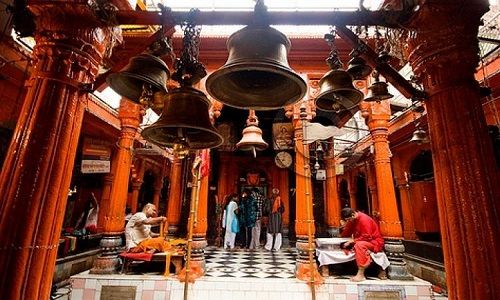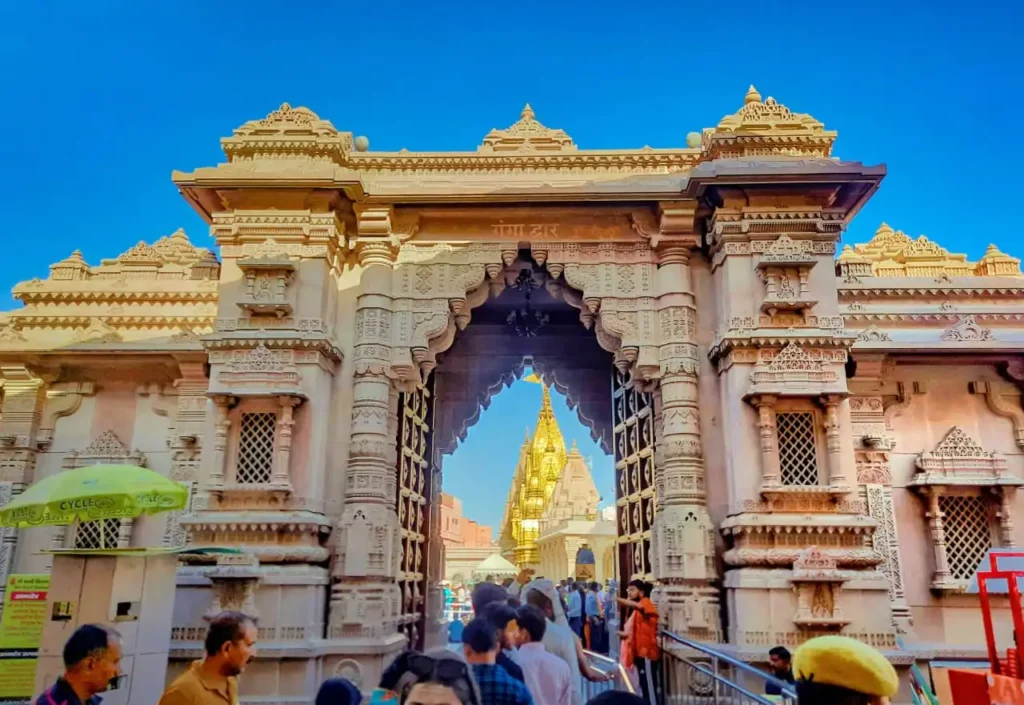Date: May 26, 2025
Part 2: The Light of Kashi
“As those who dwell in Shiva’s sacred city of Kashi are liberated by the auspicious touch of the Lord, so all this Aryan country where the Goddess has set her purifying feet shall be the Kashi of the world.” ॥97॥
~ Sri Aurobindo, Bhavani Bharati, verse 97
Kashi is the place where every Indian aspired to die because Shiva promised liberation or Moksha. A conscious traveller to the city is compelled to ponder over this ‘art of dying’ which not so ironically underpins the ‘art of living’ as it requires a life-long preparation to die in the right consciousness.
Sri Krishna ruthlessly puts it in Bhagavad Gita, “remember me every moment of life to be able to remember me at the time of death”.
antakaale cha maam eva smaran muktwaa kalevaram yah prayaati sa madbhaavam yaati naastyatra samshayah || 8.5 ||
Whosoever at the time of death leaves his body remembering Me alone and goes forth — he attains My Being; there is no doubt about this.yam yam vaapi smaran bhaavam tyajatyante kalevaram tam tamevaiti kaunteya sadaa tadbhaavabhaavitah || 8.6 ||
For whatever object a man thinks of at the final moment, when he leaves his body — that alone does he attain, O Son of Kunti, being ever absorbed in the thought thereoftasmaat sarveshu kaaleshu maamanusmara yudhya cha mayyarpitamanobuddhir maamevaishyasyasamshayah || 8.7 ||
Therefore, at all times, constantly remember Me and fight. With your mind and intellect absorbed in Me, you shall doubtless come to Me alone.”
Perched along the banks of the perennial waters of the Ganges in all its glory, Kashi is like the mystic oracle. The most ancient of cities with shrines and profound stories welling up at every twist and turn, can give away keys to several riddles of life, the most formidable being the phenomenon of Death.
“Death is our road to immortality”
Sri Aurobindo, Savitri, CWSA, Vol. 34, p. 424
The Upanishadic wisdom of Vidya (Knowledge or True Consciousness) and Avidya (Ignorance or Inconscience), as well as of Death and Immortality, is brought closer to the common man through shrines, narratives and rituals. Kashi embodies Shiva Tattva, the cosmic principle and the cosmic energy of Destruction and Transformation. Aghoras and Avadhutas are believed to visit the city for every Shivaratri, invoking and reinvigorating the Lord’s presence in the city while they also connect with the outside world.
In the immemorial story of Bharat, Time and Death are mere ephemeral phenomena that challenge and tantalize man to supersede them and quench his ceaseless quest for his own Absoluteness. Shiva, the lord of destruction manifests as Kala Bhairava, his fiercest form, in Kashi.
The story goes that Shiva created Kala Bhairava from a strand of his matted hair to cut away Brahma’s head for his falsehood. He was roaming with the slain head in his hand and it was at Kashi, the head dropped and vanished. A story that denotes the interplay of Creation and Destruction. For all that is false in creation, all that resists evolution and Divine’s manifestation on earth, Rudra emerges with his trishul to destroy. The obstacles are always within — ignorance, ego and arrogance. Kala Bhairava temples exist in all the eight directions, Ashtadik. He is the kotwal of the city protecting it and registering the entry of each devotee into the city.

Kashi Vishwanath temple is the abode of one of the twelve Jyotirlingas, when Shiva manifested as a shaft of Light with neither a source nor an end. Shivam means the sacred and the pure. It is this light of purity that destroys darkness and spreads true consciousness, a destruction that paves way to a new creation and further manifestation.
“This was the closed mute and burning source
Whence were formed the worlds and their star-dance;
Life sprang, a self-rapt inconscient Force,
Love, a blazing seed, from that flame-trance”.~ Sri Aurobindo, Shiva, Collected Poems
According to the scriptures, Shiva is the Adiguru who passed the Yogic knowledge of man’s liberation to the Saptarishis who in turn preserved it and transferred it to the humanity in symbolic gestures and languages. In a conversation dated January 12, 1965, the Mother speaks of Shiva’s assurance of his participation in the Divinisation of the world, a Supramental world that moves from light to light where there will no more be any destruction but only transformation. Death and Rebirth will be choices of the soul. Hence, Shiva is the lord of transformation at the physical level lending immortality to the body and the material world.
As the devotee snakes towards the sanctum sanctorum, he is expected to shed away his outer layers of impulses, emotions and thoughts, and step in with his bare soul surrendering to and merging with the deity. Even a modern devotee dominated by his external senses and perception is bound to sense the subtle cosmic energy embodied in the form of the linga and vibrated through various consecrated chantings and rituals. There is a sacredness to the entire milieu that compels one to acknowledge a higher presence and bow in obeisance.

The reputation of the city for her knowledge and learning drew several stalwarts who added to the essence of the city. The city also attracted invaders who stubbornly endeavoured to destroy the seat of learning. The Jyotirlinga had to be hidden away in the Gyanavapi well time and again by the loyal, devoted priests. The temple was believed to be originally built by King Vikramaditya in 5th century BCE. The current structure is a restoration by Rani Ahalyabai of Indore who patronized and restored several ancient temple structures and practices and ensured the continuity in the flow of the Sanatana Dharma. Gautama Buddha, Adi Shankara, Tulsidas, Kabir, Raidas, Hieun Tsang and several other noted personalities added a layer each to the city, lending it historical and cultural significance. Today, Varanasi is a major tourist and pilgrim centre bustling with activities.
The Ghats of the Ganges are a story in themselves. The unending funeral pyres at Manikarnika Ghat, Harischandra’s Penance of Truth at the ghat named after him, the delight of Ramcharitamanas at Tulasi Ghat, and many more that penetrate our souls. The ghats are an inspiration to a poet, a musician, a painter, a photographer and of course, a philosopher and the spiritual seeker. In that magical beauty of the Ganges and the innumerable stories of the endeavours of men and gods, a conscious traveller who refuses to be smothered by the outer bustle of vendors, touts and tourist guides, finds an inner solace and the contentment of deciphering a few answers to his existential questions in one’s own sanctum sanctorum.

The physical layout of the city is a Mandala, a tantric figure that represents and holds the cosmic form and energy in its shape. The Kashi Khanda Purana, extolls the city in a 1000 verses and lists out five circuits of the city each representing an element — earth, water, fire, air and space. Each circuit is a tour of several shrines, uplifting the devotee’s consciousness to dwell on the Divine in as many ways as possible. Many shrines are destroyed and disfigured by the invaders.
Temple and Heritage walks, boat ride to witness Ganga ārtī, LED projection of the story of the city at the Lalitha Ghat are a few tokenisms by the Tourism Department to introduce the city to the tourist. However, it is to each visitor’s persistent, inner seeking that the city opens her layered depths.
न तादृग् धर्मसम्भारो लभ्यते क्रतुकोटिभिहि
यादृग् वाराणसीवीथीसञ्चारेण पदे पदे“Performing crores of yajnas will not yield the religious benefits which will be derived at every step that is taken in the by lanes of Varanasi”.(Kashi Khand, chap 86, shlok 42)
